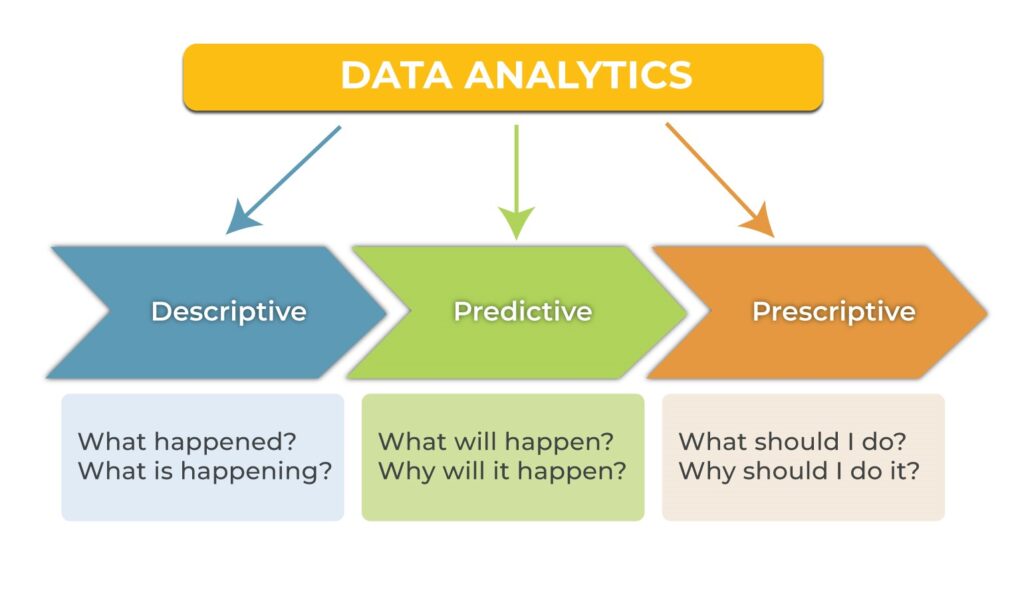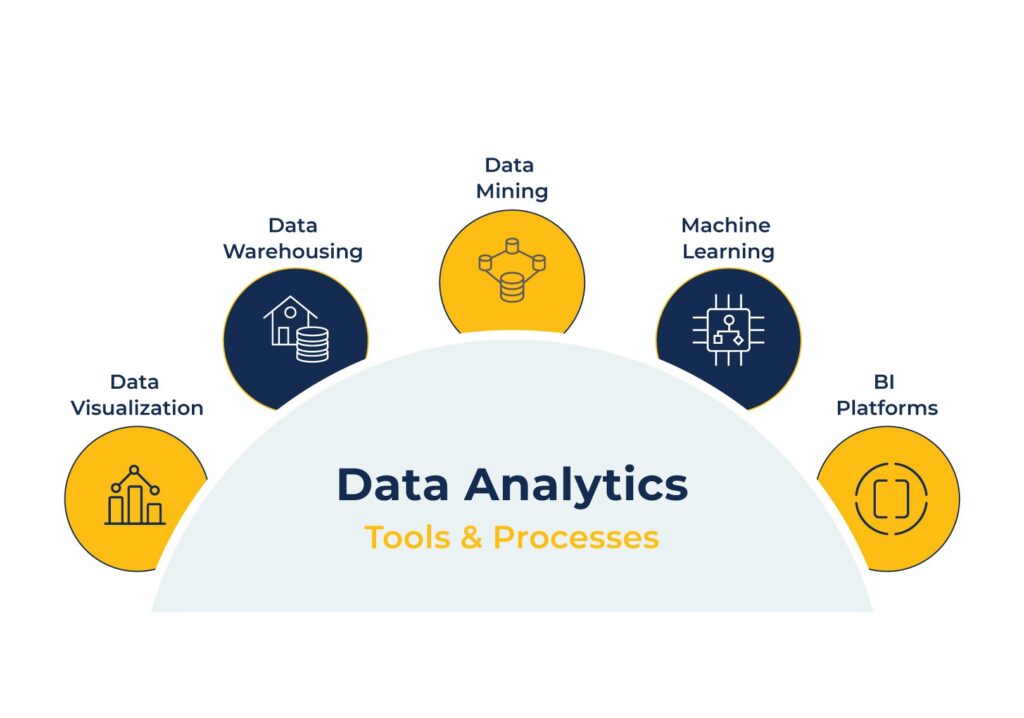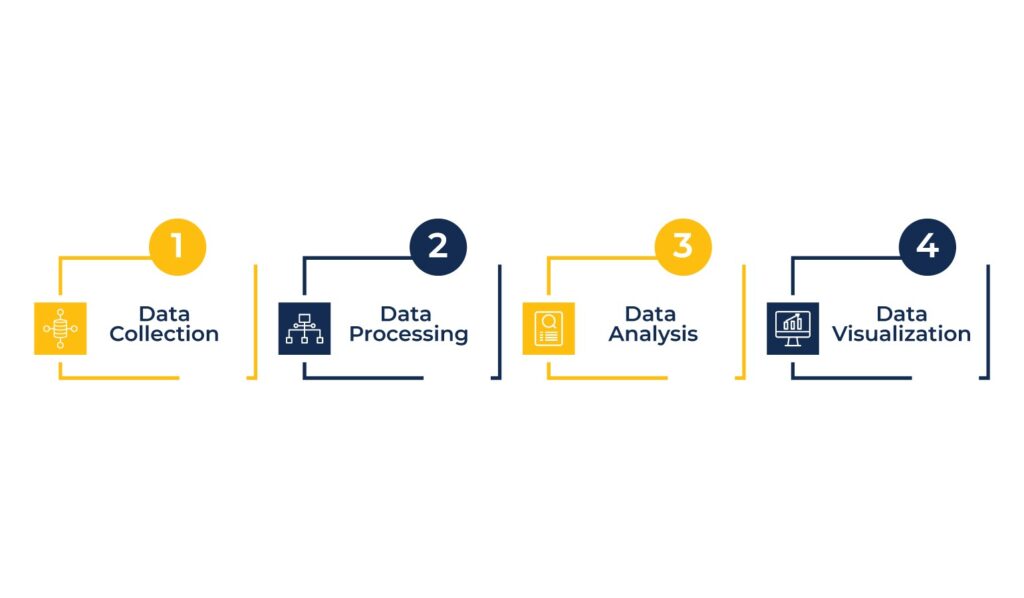In today’s data-driven business landscape, data is king. Companies across industries generate and collect vast amounts of data, and the ability to extract insights from this data can provide a significant competitive advantage. However, data alone is not enough. What will you do with tons of raw data?
To make data-driven decisions, companies must have a well-defined data analytics strategy that incorporates best practices for data management, analysis, and interpretation. This article explores the best practices for building a successful analytics strategy that enables businesses to turn data into insights.
The Importance of Data Analytics
The importance of data analytics cannot be overstated – it is the foundation on which modern enterprises not only survive but also thrive. Data analytics enables businesses to extract valuable insights from the data they generate and collect, allowing them to make informed decisions that positively impact their bottom line.
With the increasing availability of data and the tools to analyze it, companies that fail to leverage data analytics risk falling behind their competitors. Therefore, having a sound data analytics strategy is necessary for businesses of all sizes today, irrespective of which industry they belong to.
Data Analytics: Types and Tools
Data analytics encompasses a wide range of techniques and tools that allow companies to extract insights from their data.
Types of Data Analytics
There are three primary types of data analytics: descriptive, predictive, and prescriptive.
- Descriptive analytics focuses on providing a comprehensive overview of what has happened in the past. This type of analytics is ideal for businesses looking to understand historical trends and patterns.
- Predictive analytics uses historical data to identify patterns and trends and predict future outcomes. This type of analytics is helpful for businesses looking to forecast trends and make informed decisions based on future projections.
- Prescriptive analytics takes predictive analytics a step further by providing recommendations on the actions that should be taken to achieve desired outcomes. This type of analytics is ideal for businesses looking to optimize operations and enhance decision-making.

Tools & Processes Used in Data Analytics
Numerous tools are available for data analytics, ranging from simple spreadsheets to advanced machine-learning algorithms. The choice of tool depends on the type and volume of data you have to analyze, as well as the specific business use case.
Here are some of the key tools and processes used in data analytics.
- BI platforms are used to gather, analyze, and visualize data from various sources. They provide a comprehensive data view and help businesses identify patterns, trends, and anomalies.
- Data visualization tools are used to present data in a visual format, making it easier to interpret and understand. These tools are ideal for businesses looking to communicate insights and trends effectively.
- Machine learning algorithms are used to identify patterns and make predictions based on data. These algorithms can help businesses optimize operations, improve decision-making, and identify new opportunities.
- Data warehousing is a process that involves storing large volumes of structured and unstructured data in a centralized location for easy access and analysis.
- Data mining is also a process that involves extracting valuable insights from data by using various analytical and statistical techniques.

Getting Insights from Data
Getting insights from data requires more than just analyzing the data itself. It’s also essential to understand the context in which the data was generated and how it relates to business objectives.
Data Visualization tools such as dashboards and reports can help make insights more accessible and actionable, allowing businesses to make data-driven decisions more effectively.
To get insights from data, organizations need to follow a structured process. The process involves the following steps:
- Data collection: The first step is collecting relevant data from various sources, including structured and unstructured data.
- Data processing: After collecting the data, the next step is to process it. This involves cleaning, transforming, and organizing the data.
- Data analysis: The next step is to analyze the data to identify patterns, trends, and insights.
- Data visualization: The insights gained from the data analysis should be visualized in a way that is easy to understand and interpret.

Let’s look at the best practices for developing a sound data analytics strategy.
12 Best Practices for Developing a Data Analytics Strategy

Developing a successful analytics strategy requires careful planning and execution. Here are some best practices to establish a good analytics strategy.
-
Define Business Objectives
A successful analytics strategy must be aligned with the organization’s overall business objectives. Before diving into data analysis, it’s essential to clearly define what the business hopes to achieve through data-driven insights.
-
Define Your Metrics
Once you have identified your business objectives, the next step is to define your metrics. Metrics are the key performance indicators (KPIs) that you will use to track your progress toward your business goals. Defining your metrics is critical because it will help you determine the data you need to collect and the tools you need to analyze it.
-
Identify Relevant Data Sources
The success of a data analytics strategy depends on the quality and relevance of the data you collect, process, and analyze. Identifying and prioritizing data sources most relevant to the business use case is crucial.
-
Collect and Clean Your Data
With your objectives and metrics in place, the next step is to collect and clean your data. This involves identifying the data sources you need and ensuring the data is accurate and complete. Collecting and cleaning your data is critical because it will help you avoid the “garbage in, garbage out” problem that can lead to incorrect insights and decisions.
-
Choose Your Analytics Tools
Once you have collected and cleaned your data, the next step is to choose your analytics tools. There are several analytics tools available in the market, including open-source tools like R and Python, as well as commercial tools like Tableau and Power BI. When choosing your analytics tools, it’s essential to consider factors like the complexity of your data, the size of your data, and your team’s expertise.
-
Invest in Data Quality
The accuracy and completeness of data are critical to the success of any data analytics project. Investing in data quality measures such as data cleansing, normalization, and validation is essential to ensure that insights derived from the data are accurate and actionable.
-
Leverage Advanced Analytics Techniques
With the advent of machine learning and artificial intelligence, businesses can leverage advanced analytics techniques to extract insights from their data. Techniques such as clustering, regression analysis, and neural networks can provide deeper insights and uncover patterns that may not be apparent through traditional analysis methods.
-
Establish a Data Governance Framework
Effective data governance is critical to the success of any analytics strategy. A well-defined data governance framework ensures that data is managed and used consistently and securely, reducing the risk of errors and ensuring compliance with relevant regulations.
-
Foster a Data-driven Culture
Companies need to foster a data-driven culture to succeed with data analytics. This means encouraging employees to use data to make decisions and providing them with the tools and training they need to do so effectively. It also means creating a culture of experimentation, where employees are encouraged to try new things and learn from their successes and failures.
-
Develop a Scalable Analytics Infrastructure
As companies collect more data and their analytics needs grow, they must ensure that their analytics infrastructure can scale to meet their needs. This requires investing in the right technology, processes, and people to build a robust analytics infrastructure that can handle the volume and complexity of their data.
-
Analyze Your Data
The data analysis step involves using statistical techniques and machine learning algorithms to identify patterns and trends in your data. Analyzing your data is critical because it will help you uncover insights that drive business value.
-
Communicate Your Insights
Finally, the last step in building a successful analytics strategy is to communicate your insights. This involves presenting your findings in a way that is easy to understand and actionable. Sharing your insights is critical because it will help you translate your analytics efforts into business impact.
Benefits and Challenges of Developing a Data Analytics Strategy
Developing a data analytics strategy offers several benefits, including:
- Improved decision-making: Once you have the correct data and analytics tools, you can easily make data-driven decisions based on facts, not intuition or gut.
- Increased efficiency: A key advantage of data analytics is that it helps organizations identify inefficiencies in their operations and processes, eventually leading to cost savings and improved productivity.
- Competitive advantage: Organizations that can use data analytics to uncover insights and drive business value can gain a competitive advantage over their peers. In fact, data analytics is critical to achieving and maintaining a competitive edge in today’s rapidly evolving business landscape.
- Improved customer experience: Data analytics helps companies understand their customers better and provide a more personalized customer experience.

However, developing a business intelligence & data analytics strategy also comes with its own set of challenges, which includes the following:
- Data quality issues: Collecting and cleaning data can be a time-consuming and challenging process, and it’s vital to ensure that the data you are using is accurate and complete.
- Technical expertise: Data analytics requires specialized technical skills, and organizations may need help finding and retaining talent with the necessary skills. Data analytics is among the highest-paying jobs worldwide, particularly in North America and Europe.
- Cultural barriers: Implementing and fostering a data-driven culture is often challenging as organizations have to overcome resistance to change in order to adopt a data analytics strategy successfully.
- Data Security: Data security is a major concern for businesses that collect and analyze sensitive data. Companies also need to ensure compliance with regulations like HIPAA and GDPR.
Conclusion
Every company now understands the power of big data. That power essentially resides not in the raw data itself but in the latent potential that is utilized when you process the data and analyze it to extract business insights and then act upon them. That is where all the magic happens.
We have shared with you the best practices for developing a data analytics strategy. By following these best practices, you can build a robust data analytics strategy that delivers insights to help you attain a competitive edge and drive business growth.
If you need further assistance with developing a data analytics strategy for your company, contact us at [email protected]. We will book you a free consultation session with our BI & Data Analytics team to discuss how Xavor can help you.












